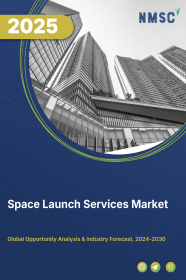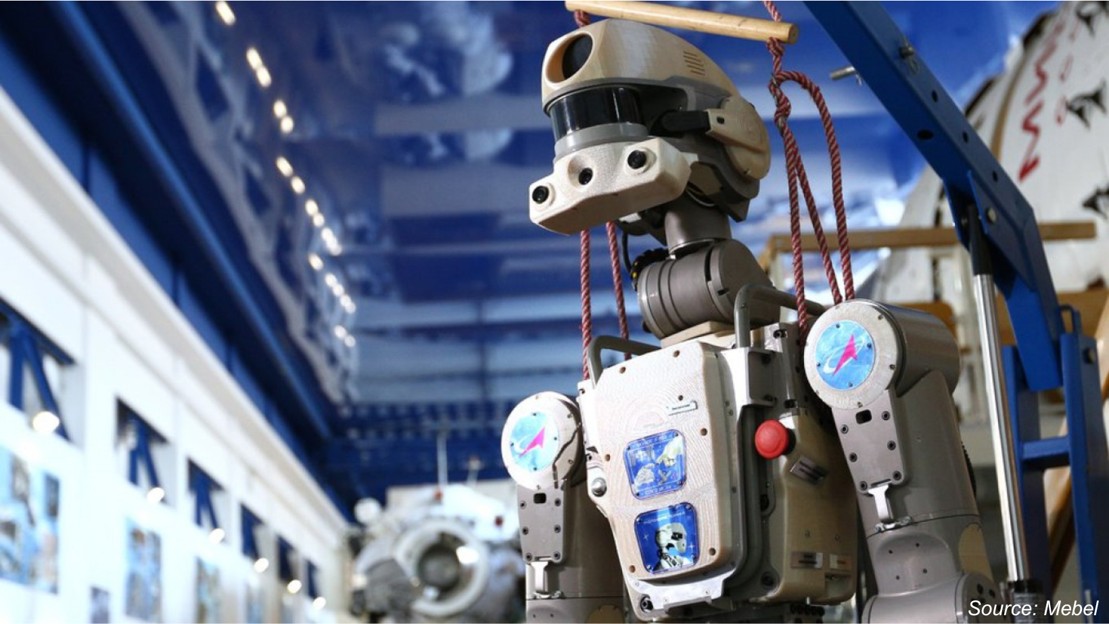
Space Launch Services Market by Launch Type (Re-usable and Single-use), by Service type (Pre-launch and Post-launch), by Orbit Type ((Geostationary Earth Orbit (GEO), Beyond Geostationary Earth Orbit (Beyond GEO), Low Earth Orbit (LEO), and Medium Earth Orbit (MEO)), by Payload (Satellite, Stratollite, Cargo, Human Spacecraft, and Testing Probes), and Others – Global Opportunity Analysis and Industry Forecast 2022-2030
Market Definition
The Space Launch Services Market size was valued at USD 11.20 billion in 2021 and is predicted to reach USD 40.12 billion by 2030 with a CAGR of 13.6% from 2022 to 2030. Space launch service is a series of activities associated with the preparation of a launch vehicle along with its payloads. The preparation process includes conversion, construction, stacking, and assembly of all components and services of spacecraft, space probes, and other crafts to ensure a smooth launch phase.
These components include equipment & machinery, hardware, and a vehicle, usually a rocket to carry crews and cargo on deep-space missions launched from Earth. Space launching services are helpful in exploring heavenly bodies such as the sun, moon, stars, and others. It provides a dependable and affordable means of launching small satellites with varied payload mass, volume, and energy capabilities.
Market Dynamics and Trends
The increasing demand for space launch services is significantly enhanced due to progressing national ambitions, geostrategic tensions, and economic opportunities such as satellite communications, distance learning, and telemedicine is driving the growth of space launch services market.
Also, the growing use of satellites in natural disaster monitoring, fisheries management, crop forecasting & urban planning, and navigation & timing signals used for navigating ships, aircraft, and land vehicles are further expected to drive the growth of the space launch services transportation market.
For instance, in September 2021, ConstellR entered into a partnership with ScanWorld to provide insights on crop forecasting and monitoring. This agreement aimed at using Scanworld’s hyperspectral imagery expertise which is used for the detection of very small changes in plant physiology & identification of plant diseases, and ConstellR’s thermal infrared imagery, which uses surface temperature to create visible images of objects. Combining these two technologies helped enhance crop yield, soil moisture measurements, and others to support worldwide smart farming.
Furthermore, rising demand for the miniaturization of satellites by government agencies, and public sector industries for specific research, earth observation, and communication are expected to further propel the growth of the space launch services industry during the forecast period.
However, factors including rise in substantial costs involved in launching services and lack of skilled workforce are expected to restrain the growth of market during the forecast period.
On the contrary, increasing entry of private space launch service providers along with application of innovative technologies such as 3D printing and reusable rockets reduced the cost of space missions and increased the number of testing probe launches that are expected to create ample growth opportunities for the space transportation market in the coming years. For instance, in January 2022, SpaceX announced the launch of Falcon 9 booster rocket for the 10th time that carried more than 100 small satellites in the Transporter-3 mission.
Market Segmentations and Scope of the Study
The space launch services market share is segmented on the basis of launch type, service type, orbit type, payload, vehicle type, launch platform, end-user, and geography. On the basis of launch type, the market is divided into reusable and single use. On the basis of service type, the market is classified into pre-launch and post-launch. On the basis of orbit type, the market is categorized into geostationary Earth orbit (GEO), beyond geostationary Earth orbit (GEO), low Earth orbit (LEO), and medium Earth orbit (MEO). On the basis of payload, the market is bifurcated into satellite, stratollite, cargo, human spacecraft, and testing probes. On the basis of vehicle type, the market is classified into medium-to heavy lift launch vehicle and small lift launch vehicle. On the basis of launch platform, the market is categorized into land, air, and sea. On the basis of end users, the market is divided into commercial, and military & government. Geographic breakdown and analysis of each of the aforesaid segments include regions comprising of North America, Europe, Asia-Pacific, and RoW.
Geographical Analysis
North America holds the lion share of space launch services market and is expected to continue its dominance during the forecast period. This is attributed to factors such as increased allotment of funds by governments for space exploration activities and growth in various space missions. For instance, in May 2021, the ministry of innovation, science and industry of Canada announced an investment of USD 3 million in technology initiatives for lunar exploration through the Canadian Space Agency (CSA). This initiative supported the growth of future space exploration, space science & technology, and jobs the in this region.
Also, the growing demand for commercial communication, small imaging satellites, and increased space exploration missions are key factors that are expected to drive the space transportation market in this region. Moreover, the presence of major key players such as Virgin Orbit, Blue Origin, Spacelink, Rocket Lab, and Boeing among others boosts the market growth in this region.
For instance, in March 2022, Rocket Lab’s Electron rocket successfully delivered StriX-β satellite into Synspective’s Synthetic-aperture radar (SAR) constellation of 30 satellites. This launch aimed at adding the StriX-β satellite into the group of 30 satellites called Synspective’s Synthetic-aperture radar (SAR) constellation to observe earth’s surface under any weather conditions and help operate other satellites.
On the other hand, Asia-Pacific is expected to show a steady rise in the space launch services market due to the rising demand for space launches for telecommunication, communication satellites, and surveillance application. Also, the presence of major companies such as Japan Aerospace Exploration Agency (JAXA), Gilmour Space Technologies, I-space, and Eurockot Launch Services among others are expected to boost the growth of the space launch services market in this region.
For instance, in the financial year 2021, Japan Aerospace Exploration Agency (JAXA) planned an investment of USD 4.14 billion in space activities. This investment is aimed at defending Japan’s military operations and carrying out various planning and execution of activities in outer space to monitor military command, precision navigation, and timing (PNT) for independent missile launches and track sea-based launches. Moreover, rising demand for space-based communications systems, geospatial information systems, and prospective fishing zones (PFZs) are expected to drive the space launch services market growth in this region.
Competitive Landscape
Various industry players operating in the space launch services industry include Space Exploration Technologies Corp. (SpaceX), Orbital Sciences Corporation, Sierra Nevada Space Systems, Lockheed Martin, Boeing, United Launch Alliance, Virgin Galactic, Rocket Lab, Planet, and Capella Space. These market players are adopting various strategies such as partnership agreements across various regions to maintain their dominance in the space launch services market.
For instance, in May 2022, Sierra Space announced a strategic partnership with Spirit AeroSystems to speed up the commercialization of the space economy by lowering costs. This collaboration aimed at developing affordable design, fabrication, and assembling of cargo modules. Moreover, in May 2021, Geoplex announced a partnership with Capella Space to deliver high-resolution 3D images of objects such as surfaces, vegetation, smoke, and clouds. This venture allowed Geoplex to use Capella’s high-tech, lightweight miniature satellite technology to capture images in all weather conditions and provide a deep understanding of our planet.
KEY BENEFITS
-
The space launch services market report provides a quantitative analysis of the current market and estimations from 2022 to 2030. This analysis assists in identifying the prevailing market opportunities to capitalize on.
-
The study comprises a detailed analysis of the space launch services market trends including the current and future trends for depicting the prevalent investment pockets in the market.
-
The information related to key drivers, restraints, and opportunities and their impact on the space launch services market is provided in the report.
-
The competitive analysis of the market players along with their market share in the space launch services market is mentioned.
-
The SWOT analysis and Porter’s Five Forces model are elaborated in the study.
-
The value chain analysis in the market study provides a clear picture of the stakeholders’ roles.
SPACE LAUNCH SERVICES MARKET KEY SEGMENTS
By Launch Type
-
Re-usable
-
Single-use
By Service type
-
Pre-launch
-
Post-launch
By Orbit Type
-
Geostationary Earth Orbit (GEO)
-
Beyond Geostationary Earth Orbit (Beyond GEO)
-
Low Earth Orbit (LEO)
-
Medium Earth Orbit (MEO)
By Payload
-
Stratollite
-
Cargo
-
Human Spacecraft
-
Testing Probes
By End-User
-
Commercial
-
Military
-
Government
By Vehicle Type
-
Medium-to Heavy Lift Launch Vehicle
-
Small Lift Launch Vehicle
By Launch Platform
-
Land
-
Air
-
Sea
By Geography
-
North America
-
U.S
-
Canada
-
Mexico
-
-
Europe
-
Germany
-
France
-
Italy
-
Spain
-
United Kingdom
-
Russia
-
Sweden
-
Rest of Europe
-
-
Asia-Pacific
-
Australia
-
China
-
India
-
Japan
-
South Korea
-
Indonesia
-
Singapore
-
Rest of Asia-Pacific
-
-
RoW
-
UAE
-
Brazil
-
South Africa
-
Israel
-
KSA (Kingdom of Saudi Arabia)
-
Turkey
-
Remaining Countries
-
REPORT SCOPE AND SEGMENTATION:
|
Parameters |
Details |
|
Analysis Period |
2021–2030 |
|
Base Year Considered |
2021 |
|
Forecast Period |
2022–2030 |
|
Market Size Estimation |
Billion (USD) |
|
Market Segmentation |
By Launch Type (Re-usable, Single-use) By Service Type (Pre-launch, Post-launch) By Orbit Type (Geostationary Earth Orbit (GEO), Beyond Geostationary Earth Orbit (Beyond GEO), Low Earth Orbit (LEO), Medium Earth Orbit (MEO)) By Payload (Stratollite, Cargo, Human Spacecraft, Testing Probes) By End- User (Commercial, Residential) By End-User (Commercial, Military, Government) By Vehicle Type (Medium-to Heavy Lift Launch Vehicle, Small Lift Launch Vehicle) Lauch Platform (Land, Air, Sea) |
|
Geographical Segmentation |
North America (U.S., Canada, Mexico) Europe (Germany, France, Italy, Spain, United Kingdom, Russia, Sweden, Rest of Europe), Asia-Pacific (Australia, China, India, Japan, South Korea, Indonesia, Singapore, Rest of Asia-Pacific), Rest of the World (UAE, Brazil, South Africa, Israel, KSA (Kingdom of Saudi Arabia), Turkey, Remaining Countries) |
|
Companies Profiled |
Space Exploration Technologies Corp. (SpaceX), Orbital Sciences Corporation, Sierra Nevada Space Systems, Lockheed Martin, Boeing, United Launch Alliance, Virgin Galactic, Rocket Lab, Planet, Capella Space |
Key Players
-
SpaceX
-
Orbital Sciences Corporation
-
Sierra Nevada Space Systems
-
Lockheed Martin
-
Boeing
-
United Launch Alliance
-
Virgin Galactic
-
Rocket Lab
-
Planet
-
Capella Space




















 Speak to Our Analyst
Speak to Our Analyst

























